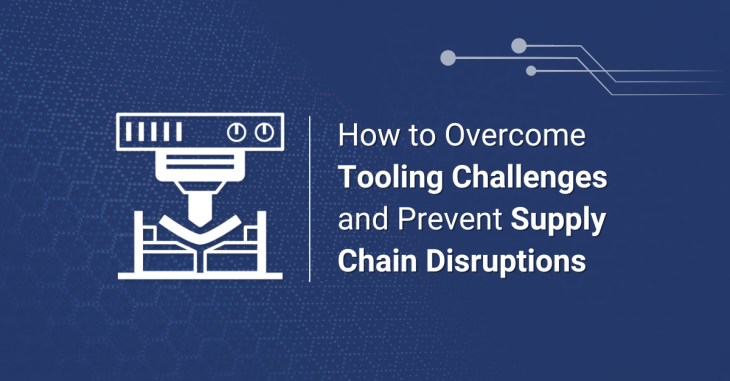How to Overcome Tooling Challenges and Prevent Supply Chain Disruptions

For many companies, tooling is a crucial component within the supply chain. Tooling is often complex, custom-made, expensive, and prone to wear. Furthermore, customer tooling is often located at suppliers where it goes unchecked while it is used to make purchased parts. If all of these tooling aspects sound like a recipe for disruption and cost, that’s because it is! In this white paper, we’ll look at some of the challenges surrounding tooling, why it doesn’t receive the attention it should, and how Rhythm has developed a platform to bring order to your tooling assets.
How Tooling is Treated at Many Companies
During my time as a procurement executive at a major Fortune 500 industrial company, I dealt heavily with tooling. Frankly, when the word, “tooling,” came up, it was almost always in a negative light! The business I was responsible for spent tens of millions in tooling every year. We had no idea how to budget for tooling, which meant that we either wildly overspent or had significant sums of unspent money at the end of the fiscal year.
Our overruns were caused by poor forecasting that left us without enough tooling capacity or we suffered massive tooling disruptions. This was because we had pushed out much-needed repairs or maintenance at our suppliers. The pushouts were often caused by budget distress or using tooling past its service limit due to higher than forecasted orders from customers. In the end, my experience in dealing with tooling was like forecasting a tornado strike. In other words, we had no idea when tooling would cause problems, the severity, and the cost.

A Lack of Attention & Focus Can Lead to Major Costs
The major reason that tooling receives so little attention in most organizations is that it’s an asset. It’s an asset with a life, but it’s unfortunately one that requires additional investment. If the tool is running at a customer’s internal plant, control and care is often better executed. When tools are located on supplier floors, though, it’s often a mess. Suppliers are often not motivated to spend money on repairs or they are concerned about asking customer’s procurement organizations for financial support. The other non-motivator is that tooling rarely affects a procurement organization’s material productivity metric or costs savings target. Therefore, it’s often neglected until it causes major issues.
When tooling causes problems, they’re often expensive or even catastrophic. My experience is that new bespoke tooling for injection molding or stamping in some industries (automotive, aerospace, and medical are good examples) can take more than a year to reach production after validation and customer approvals are met. While a new tool is being built, an existing tool (if it can be limped along) will likely struggle or fail to meet demand. This can mean expedited premium freight, line down costs, and even a loss of trust or business awards with end customers.
Other challenges in Tooling
For many companies, tooling (whether owned by the customer, supplier, or under an amortization scheme) is an unknown. Companies quickly move tooling from one location to another to gain capacity without recording the change. Then, an understanding of the real-time condition of the tooling is usually a mystery. Finally, when a supplier approached a customer for financial help to fix, repair, replace, or duplicate tool, Procurement is left defenseless. There’s usually no time to run a competitive RFQ or research whether the request from the supplier is even valid. This means spending even more money on an asset that may be under warranty and ultimately has a major stake in the profitability of a given piece of business.
Challenges bring Opportunities
In my experience, there are many opportunities to improve the tooling environment. It sounds simple, but many companies lack a current tooling asset list with key information including the name of the supplier that currently has the tool, the location of the tool, the part numbers made by the tool, the maintenance and repair history, and the condition. If a tool were to break, many companies lack the ability to quickly understand if another tool exists within their asset list that can make the same part.
Forecasting when tools will need investment, replacement, or duplication is a major opportunity. Organizational finance departments would greatly appreciate this as it helps with planning and budgeting. For Procurement, it also means increased leverage because predictive activities translate to more time for negotiations. Finally, and most importantly, a solid, trustworthy forecast will mean lower customer service costs as disruptions will surely decrease. Click here to learn more.




